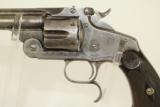 |
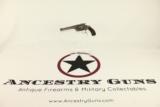 |
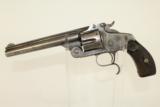 |
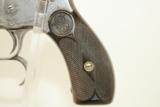 |
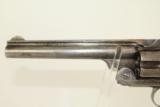 |
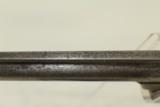 |
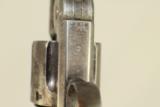 |
 |
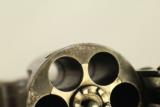 |
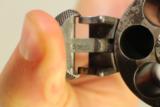 |
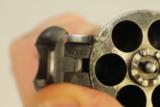 |
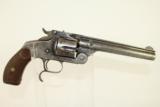 |
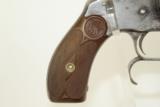 |
 |
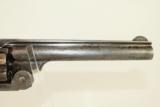 |
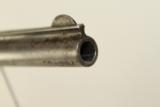 |

HISTORIC Japanese Navy S&W No. 3 with Anchor Acceptance Mark
Guns International #: 100807207 Seller's Inventory #: 21648
Category: Smith & Wesson Revolvers - Antique - .44 Russian Revolvers
Seller's Information
When emailing or calling sellers direct, please mention that you saw their listing on GunsInternational.com
Seller: AncestryGunsLLC
Company: Ancestry Guns LLC
Member Since: 11/3/16
State: Missouri
Zip: 65203
Country: United States
Phone: (314) 707-7373
International Phone: 314-707-7373
Platinum Seller
Number of Active Listings: 1053
Total Number of Listings: 42308
Seller: FFL Dealer
Return Policy: 3 day inspection and return policy on used guns.
Payment Types Accepted: Credit Card, Certified Check, Money Order
Description:
Historic S&W No. 3 Japanese Navy Model SA Revolver
Japanese Navy Contract with Anchor Acceptance Mark
Here we present an antique Smith & Wesson New Model No. 3 Single Action Revolver. This revolver is very interesting in that all frames for this model were made by 1898 (even though production was from 1878-1912) therefore allowing this model revolver as a whole to be classified as an antique by ATF standards.
Prior to Commodore Perry’s Expedition to Japan in 1853, Japan’s ruling class, the shogunate, instituted an isolationist policy in an effort to keep its people from being influenced by outside forces. The Dutch were the sole Europeans granted permission to have a trading outpost on the Japanese islands, and most other trade was done with China and Korea. These policies had frozen Japan in time in many ways, not the least of which were militarily or technologically. So it was when Perry arrived with his flotilla of well-armed ships and men. The Japanese shogunate had no choice but to concede to allow the United States to resupply and trade at Japanese ports. This also opened the door for other world powers to sign so-called “unequal treaties” with Japan through threat of force. Like the name suggests, these treaties favored the strongmen and left Japan at a large disadvantage.
The shogunate was already unpopular, but foreign intrusion was the last straw. The Boshin War or the Japanese Revolution ensued, pitting samurai loyal to the Emperor against the Tokugawa shogunate. The conflict lasted from 1868 to 1869, ending the shogunate and the Edo Period, and ushering in a period of rapid and determined Westernization on the part of Japan. Reform was sweeping during this time, known as the Meiji Period. The film The Last Samurai is set during this time and demonstrates visually the shift to more modern military, European dress, infrastructure and diplomacy among other reforms. Players and motives for this reform were many, but a central thought was to eventually become a world power itself, so that Japan could renegotiate these “unequal treaties”.
Japan relied heavily on imported arms from all over the world until they established their own Imperial Japanese Army Tokyo Arsenal in 1871 and began production of their first indigenous longarm in 1880 (the Meiji Type 13 Murata Bolt Action Rifle). Japan continued to purchase revolvers from abroad, especially Smith & Wesson. When Russia adopted the S&W Model 3 .44 Russian variant, Japan followed suit by purchasing batches of them from 1878 to 1908. These revolvers were stamped with an anchor for the Japanese Navy and were in use during the First Sino-Japanese War (1894-95), when Japan defeated a modernized Chinese Army. Again, Japan went to war, this time against the Russians in the Russo-Japanese War (1904-1905), upsetting the odds and stunning the world by defeating such an established power. These sidearms proved worthy and were rewarded with long service lives, still being widely used during the Great War. By the time of World War II, many were still in use, having been relegated to the rearguard, but kept alive via arsenal refurbishment. These are considered along with Japanese “last ditch” weapons and some were brought back with U.S. servicemen at the end of the war. With a service life decades long, with multiple conflicts, it is a wonder that we still have any examples to be found today.
The overall condition of this specimen is very good with some of the original blue finish remaining on the frame. Case colors are still present on the hammer. Barrel legend and other markings remain clear and legible, including the Japanese naval anchor acceptance mark. The grips are replacements, but do belong to the model. The serial numbers match aside from the top latch, most likely due to the Japanese arsenal refurbishment to keep this revolver in service. The bore is in fine condition and the action is excellent.
A little bit more: S&W revolvers, then as now, are some of the finest in the world. Excellently machined, well-proportioned and accurate, it is no wonder why so many records of the era were set with this revolver. Notable shooters and owners of the No. 3 include Buffalo Bill Cody, Ira Anson Paine, F.E. Bennett, Annie Oakley, Frank Butler and Theodore Roosevelt.
Own the original! This is a legitimate antique and not a reproduction.
Barrel is 6-1/2 inches in length.
Caliber: .44 Russian
The bore is in fine condition and shiny. The firing mechanism is excellent.
Overall condition as seen in photos.
Here is a significant piece of the history, representative of the modernization of Japan in the late 19th and early 20th Centuries.
This piece would be at home in a variety of themed collections.
Very Fast. Very Safe. FREE SHIPPING. Will need to be sent to your local FFL.
Guaranteed AUTHENTIC & Includes CERTIFICATE OF AUTHENTICITY.
ancestryguns
$4250
#21648
SOLD
Antique: Yes